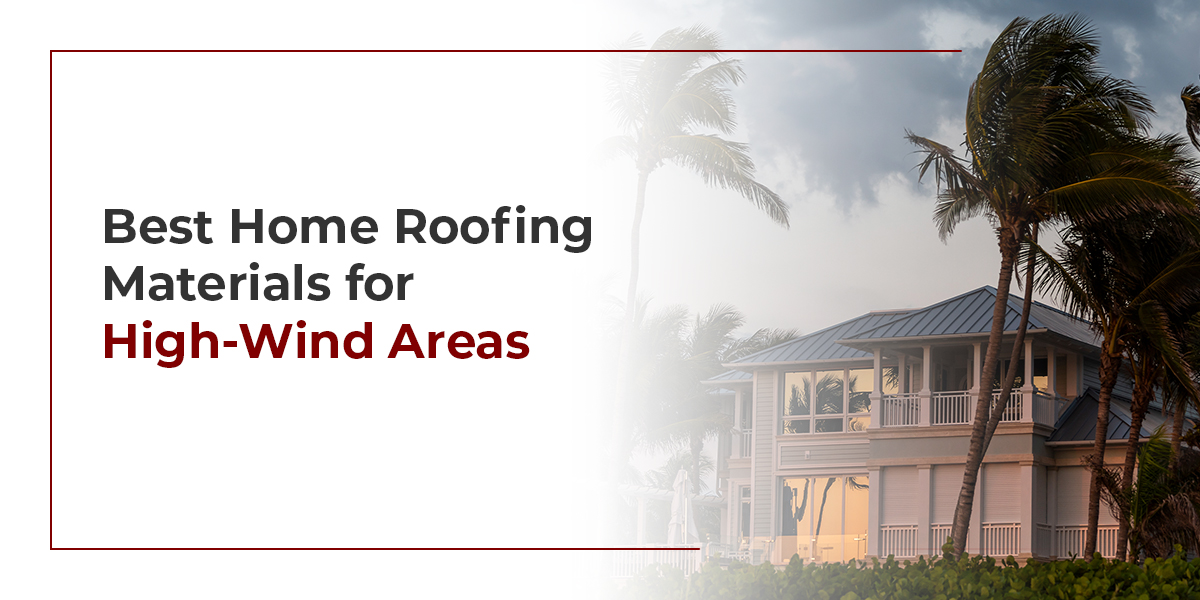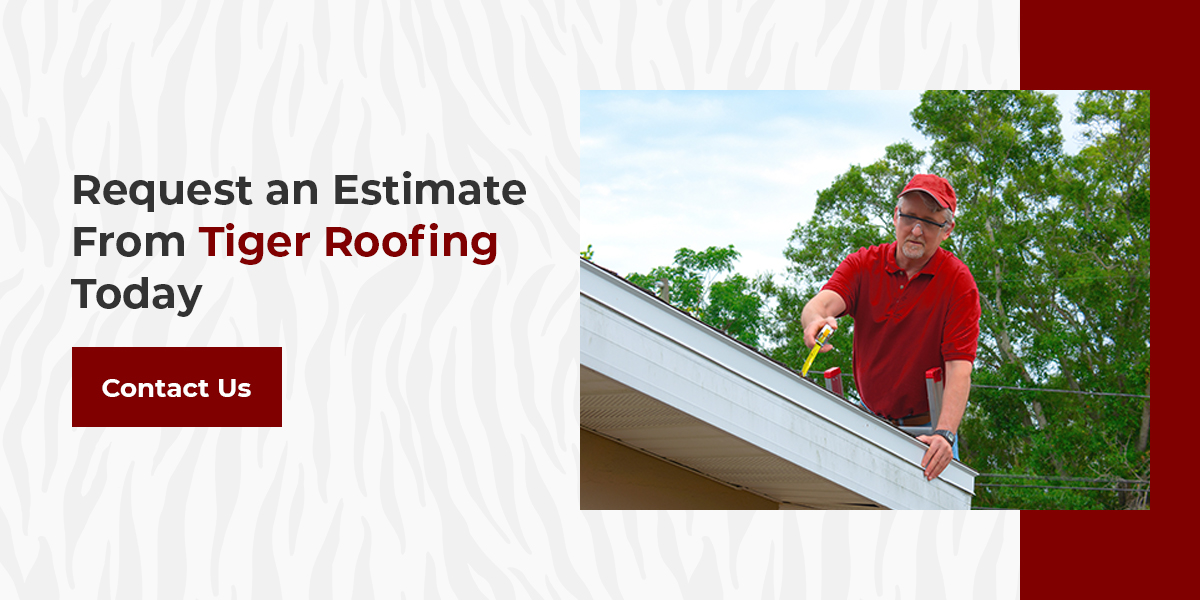
Your home’s roofing is crucial to its overall function and protection, providing a safe shelter for you and your loved ones. There are many situations where having the proper type of roof for your area is critical, from thunderstorms to high winds during tornado season.
By researching and selecting the strongest roofing material, you can better equip your roof to protect your home from high-wind conditions and other elements. Of course, the installation process also plays a sizable role in the roof’s effectiveness, so finding an experienced roofing contractor will be essential.
If you’re looking for the best roofing materials for high wind, you’ve come to the right place. Read on to discover some of the most wind-resistant roof types and how to choose the ideal material for your home.
Particularly in areas susceptible to tornados, hurricanes and thunderstorms, wind gusts of 75 miles per hour (mph) or more can easily blow off roofing tiles. They can also lift up garbage cans, patio furniture and other large debris that can hit your roof, potentially resulting in considerable structural damage.
Fortunately, certain roofing materials are incredibly sturdy and impact-resistant in these circumstances. They can help prevent or alleviate some of the severe damage that comes from these storms.
Roofs are designed to protect you and your family from the elements. When severe weather conditions occur, you’ll want a roofing material that can hold up well. Wind-resistant shingles are sturdier, more protective and impact-resistant, making them the best choice for high-wind storms.
While wind-resistant shingles tend to cost a little more than other types, wind is among the most common causes of home insurance claims, making the added expense well worth it.
As you can see, choosing the right type of roof is vital when it comes to storms and windy conditions. So, what are some of the best roofing materials for strong winds? Below are four terrific options to consider.
Fiberglass shingles are a popular type of roofing that offers various benefits. When properly installed by a roofing expert, they’re strong, durable and highly unlikely to come apart. They’re an excellent choice for high-wind areas and thunderstorms, withstanding various temperatures and conditions. Additionally, they tend to be more affordable than materials like asphalt, metal and clay.
Though fiberglass shingles may not last quite as long as metal, they’re still a great option to discuss with your local roofing professional. Like with any other roofing material, it’s crucial to ensure your fiberglass shingles are installed with expert skill. Installing shingles correctly and according to the manufacturer’s recommendations is key to receiving maximum performance from the product.
While clay tiles add a stunning and aesthetic appeal to your roof, they’re not always the first choice that comes to mind for high-wind situations. After all, the last thing you want is a clay tile coming loose and getting blown off the roof. However, clay tiles that are installed properly can remain secure for years to come.
When using clay tiles in a particularly windy area, a roofing professional will typically secure them to the roof deck using a foam adhesive. This helps prevent the tiles from flying away. Clay tiles can also provide non-wind-related benefits like water resistance, energy efficiency and visual appeal. Keep in mind that you’ll want to invest in high-quality clay tiles for optimal home protection, so this may be a pricier option.
Due to their heavy nature, clay tiles can offer protection and durability when installed by experts. A roofing professional can perform the correct installation technique to ensure they’re both beautiful and functional, defending your home during storms and harsh winds.
Asphalt shingles are another popular roofing option due to their availability, affordability and easy installation. While asphalt roofs are simple in terms of building and overall maintenance, they aren’t always as durable as the other materials mentioned. Their edges can be easily lifted, making them more susceptible to damage by wind-driven debris.
If your area frequently encounters thunderstorms and lots of high winds, an asphalt roof may not be your first choice. However, a few brands have additional features to help make them more secure against severe weather and high winds. Furthermore, asphalt shingles offer a variety of benefits, including their affordability, energy efficiency, fire resistance, various styles and low maintenance, to name a few.
Of course, the quality of installation can largely influence how the asphalt shingles will hold up against the elements. Once again, you’ll want to invest in an excellent roofing expert to ensure they perform well.
Some don’t consider metal to be as aesthetically pleasing as other roofing materials. However, others enjoy the unique and industrial feel it provides. No matter which way you lean regarding its appearance, there’s no denying that metal roofing is a smart choice for windy regions. Its protection and practicality have made it a widely popular choice for homeowners.
Metal roofing is highly effective in combating storms, high winds, rain and other elements. It does an excellent job of keeping water out of the home when installed properly. Many metal roof designs have minimal seams and overlaps, which means there are few opportunities for wind to get in and wreak havoc.
If you’re looking for a highly protective roof that’s affordable, practical and long-lasting, metal roofing may be your top choice. Consult a professional when installing and maintaining a metal roof so it can perform well when faced with high wind speeds.
Some other benefits of metal roofing are:

When it comes to choosing the right roof for windy conditions, it’s important to turn to a professional that can recommend the best materials and handle the installation process. At Tiger Roofing, we can help protect your home from heavy rainfall, high winds, tree branches, leaves and other debris by installing a high-quality residential roof.
Servicing Maryland, Virginia, Delaware and Tenessee, we’re dedicated to delivering superior knowledge, services, products and design. As a premier source for roof repairs and full replacement projects, we can work with you to assess storm damage, plan for potential conditions and determine the ideal course of action.
Weather can be unpredictable, but we have the expertise necessary to handle anything the forecast may throw your way. Request a roofing estimate from us today!